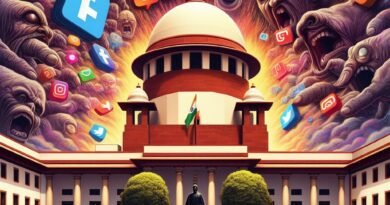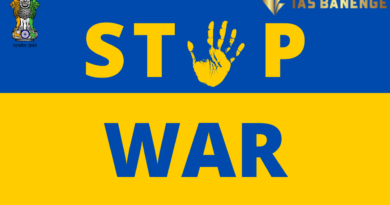Polity and Governance Current Affairs for UPSC 2023 I PART – 4
JUDICIARY
1.PUBLIC INTEREST LITIGATION
Supreme Court imposes penalties on petitioners for filing frivolous PIL petitions as luxury litigation.
Public Interest Litigation (PIL) is a legal tool that allows individuals or groups to raise issues of public concern or human rights violations in court. This term originated from American law and is now used in India. PIL is based on Article 39 A, which ensures that the state provides justice without discrimination. People can use PIL to address matters such as bonded labor, women’s rights, pollution, food safety, and heritage conservation. PIL can be filed in any High Court or directly in the Supreme Court.
| Who can file a PIL? | Any person, group or non-governmental organization (NGO) |
|---|---|
| Where can PIL be filed? | Any High Court or directly in the Supreme Court |
| What is the requirement for filing a PIL? | Seeking legal remedy for a public interest issue or human rights violation, and must not have any personal interest in the matter |
| Can the court take suo moto action in PIL cases? | Yes, the court may take suo moto action in certain cases where there is a clear violation of fundamental rights or public interest at stake |
2.TRIBUNALS
Supreme Court declared that the NGT is subordinate to the High Court regarding territorial jurisdiction in a case regarding the prohibition of construction work at Rushikonda hills in Visakhapatnam.
In case of conflicting orders, constitutional courts orders will prevail over that of statutory tribunals.
• Earlier, in L Chandra Kumar v Union of India (1997), SC ruled that orders of tribunals under Article 323A and 323B of Constitution are subjected to Writ Jurisdiction of High Court (Article 226)
About Tribunals Reforms (Rationalisation and Conditions of Service) Act, 2021
The Tribunals Reforms (Rationalisation and Conditions of Service) Act, 2021, which replaced an earlier ordinance, proposes dissolving certain existing appellate bodies and transferring their functions to other existing judicial bodies. The act also proposes setting up a search-cum-selection committee to select and appoint chairpersons and members of various tribunals. The committee will consist of the Chief Justice of India or a Supreme Court judge nominated by them as chairperson, two secretaries nominated by the central government, a sitting or outgoing chairperson or a retired Supreme Court judge or retired Chief Justice of a High Court, and the secretary of the ministry under which the tribunal is constituted. The term of office for a chairperson or member is four years, subject to an upper age limit of 70 years for chairpersons and 67 years for other members, with a provision for reappointment. The minimum age limit for appointments as a chairperson or member is 50 years
3. APPOINTMENT OF JUDGES
Supreme Court of India will have all sanctioned seats filled i.e., 34 after more than two years.
The Supreme Court of India currently has 32 judges out of a sanctioned strength of 34, as per the strength prescribed by Parliament under Article 124(1) of the Constitution of India. The appointment of judges in the judiciary is done by the President under Article 124(2) with the help of the collegium system. The Chief Justice of India (CJI) and judges of the Supreme Court are appointed based on the recommendation of the collegium system. The CJI is usually the senior-most judge of the Supreme Court, and the next CJI is recommended by the outgoing CJI. The collegium system is a method by which judges of the Supreme Court and High Courts are appointed and transferred. The Supreme Court collegium is a five-member body headed by the incumbent CJI and comprising four other senior-most judges of the court, while the High Court collegium is led by the incumbent Chief Justice and two other senior-most judges of that court.
4.PRISON REFORMS
National Crime Record Bureau has released Prison Statistics in India (PSI) Report, 2021.
The responsibility of administering and managing prisons in India lies with the respective State Governments. The Prison Act of 1894 and prison manuals of the respective state governments govern the functioning of prisons. The Ministry of Home Affairs offers guidance and advice to the States and Union Territories on various issues concerning prisons and inmates, but the subject of prisons is ultimately a state subject.
PSI Report 2021
| Aspects covered in the report | Key findings |
|---|---|
| Types of jails and their capacity | Provides data on numbers and available capacity of different types of jails |
| Strength and training of jail officials | Provides data on the strength and training of jail officials |
| Prison budget and expenditure | Provides data on prison budget and expenditure |
| Undertrials | Nearly 8 out of every 10 prisoners in Indian jails are awaiting trial. Uttar Pradesh has the highest number of undertrials followed by Bihar and Maharashtra. 80% of undertrials are from disadvantaged sections of society. |
| Disadvantaged sections prisoners | 67.5% of inmates belong to SC, ST and OBC communities. |
| Budget and infrastructure | Sanctioned budget for 2021-22 has increased by 13% in comparison to 2020-21. |
5.DEATH PENALTY (CAPITAL PUNISHMENT)
Supreme Court had Suo moto opened a review of the process by which courts award the death penalty.
The death penalty is a legal practice in which a person is put to death by the state as punishment for a crime after a legal trial. India is one of the few countries that still retain capital punishment for serious offenses. As of the end of 2021, there were 488 prisoners on death row in India. Some states have introduced or proposed more laws with the death penalty, such as for causing deaths by spurious liquor.
In 1980, the Indian Supreme Court, in the case of Bachan Singh v State of Punjab, upheld the constitutional validity of the death penalty. However, the court provided a framework for future sentencing judges to follow when deciding between life imprisonment and the death sentence. This framework includes considering the nature of the crime, the circumstances of the offender, and the possibility of reformation and rehabilitation.
6.LEGAL SERVICES AUTHORITIES
“Prime Minister urges judiciary to expedite release of undertrials at first All India District Legal Services Authorities (DLSA) Meet”
About Legal Service Authorities Act, 1987
The Legal Services Authorities Act, 1987 was enacted to establish a uniform nationwide network to provide free and competent legal services to the weaker sections of society. Article 39A of the act provides for free legal aid to the poor and weaker sections to ensure justice for all. The National Legal Services Authority (NALSA) was established under the act to monitor and evaluate the implementation of legal aid programs and to lay down policies and principles for making legal services available. The Chief Justice of India is the Patron-in-Chief of NALSA, which is located at the Supreme Court of India. The act also provides for the constitution of State and District Legal Services Authorities.
7.LIVE STREAMING OF CONSTITUTION BENCH HEARINGS
For the first time, Suprem Court livestreamed its Constitution Bench Hearings.
About Live-streaming of court proceedings
The e-courts project is a government initiative aimed at introducing technology in the judiciary to make it more accessible and efficient. As part of the project’s third phase, live-streaming of court proceedings has been introduced in six high courts in India, namely Gujarat, Orissa, Karnataka, Jharkhand, Patna, and Madhya Pradesh. This move towards live-streaming court proceedings was also endorsed by the Supreme Court in 2018 in the case of Swapnil Tripathy vs Supreme Court. The Supreme Court declared live telecast of court proceedings as a fundamental right to access justice under Article 21 of the Constitution. The publication of court proceedings is also an aspect of Article 129, which designates the Supreme Court as a court of record.
Newly initiatives launched under e-Court Project
| Initiative/Concept | Description |
|---|---|
| Virtual Justice Clock | Exhibits vital statistics at Court level giving the details of cases instituted, cases disposed and pendency. |
| JustIS Mobile App 2.0 | Tool for judicial officers for effective court and case management by monitoring pendency and disposal of cases. |
| Digital court | Initiative to make court records available to judges in digitized form to enable the transition to paperless courts. |
| S3WaaS Websites | To generate, configure, deploy and manage websites for publishing specified information and services related to district judiciary. |
| In-camera proceedings | Private proceedings conducted as per court’s discretion in sensitive matters to ensure protection and privacy of parties involved. |
| Full Court Meeting | Meeting attended by all judges of the court, called by the Chief Justice of India to discuss issues of importance to the judiciary. |
TO THE POINT
- MoU has been signed between Department of Justice and NALSA on Integrated Delivery of Legal Services.The Tele-Law program is an initiative launched by the Department of Justice in 2017, which provides a reliable and efficient e-interface and pre-litigation tool for marginalized individuals seeking legal aid. The program connects individuals with panel lawyers through tele/video-conferencing infrastructure available at Common Service Centers (CSCs) across 1 lakh Gram Panchayats. As per the agreement, NALSA will provide the services of 700 lawyers in each district exclusively for the Tele-Law program. These empanelled lawyers will act as referral lawyers and assist in strengthening the mechanism for dispute avoidance and resolution at the pre-litigation stage.
- Broadcast Seva Portal launched.The Ministry of Information & Broadcasting has launched an online portal solution for speedy filing and processing of applications of broadcasters for various licenses, permissions, registrations, etc. The web portal is user-friendly and aims to bring transparency, accountability, and responsiveness to the ecosystem. It will reduce the turnaround time of applications and enable applicants to track the progress of their applications.
- Supreme Court Rules that No Individual Can be Forced to be Vaccinated as Bodily Autonomy and Integrity are Protected under Article 21 of Constitution.The SC has ruled that the government cannot force individuals to be vaccinated, as bodily autonomy and integrity are protected under Article 21 of the Constitution. However, it has also stated that the government can impose restrictions on individual rights in public health interests, provided they meet the 3-fold requirement laid down by the SC in the Puttaswamy Judgement, which includes legality, legitimate need, and proportionality. Bodily autonomy and integrity are the rights of each human being, including children, to autonomy and self-determination over their own body, and any unconsented physical intrusion violates these rights.
- Supreme Court delivered a split verdict in Karnataka hijab ban case. A split verdict is passed when a bench of judges cannot come to a unanimous or majority decision in a case. Typically, judges sit in benches of odd numbers for important cases. In the event of a split verdict, the case is heard by a larger bench constituted by the Chief Justice of India.
- Supreme Court: Doctrine of Res Judicata Applies to Subsequent Stages of Same Proceedings Too. The principle of Res Judicata refers to the legal doctrine that once a matter has been adjudicated on its merits by a competent court, the same matter cannot be re-litigated between the same parties or their privies. This principle provides finality to litigation and prevents parties from being harassed by multiple legal proceedings on the same issue. In India, the principle of Res Judicata is defined under Section 11 of the Civil Procedure Code. This section states that a judgment passed by a court of competent jurisdiction shall operate as a bar to the trial of any subsequent suit or proceeding between the same parties or their legal representatives concerning the same matter directly and substantially in issue. Thus, the principle of Res Judicata ensures that a final and conclusive determination is reached on a legal dispute and that the parties involved can rely on the decision as being final.
- Doctrine of pith and substance. The principle of Pith and Substance refers to the concept that when determining whether a particular law falls under a specific subject mentioned in one List or another, the court should look at the true nature and essence of the matter at hand. This means that if the substance of the law falls within the jurisdiction of the Union List, any incidental encroachment on the State List does not necessarily make it invalid.The Supreme Court of India has referred to the principle of Pith and Substance in various cases, including the Calcutta Gas Company case (1962), India Cement Ltd Vs. State of Tamil Nadu (1990), and Jilubhai Nanbhai Khachar case (1994). The true nature and character of a legislation must be ascertained to determine the List under which it falls. This principle ensures that the federal distribution of powers between the Centre and the States is respected and that each level of government has the power to legislate on its designated subject matters.
- Doctrine of Colourable Legislation. The principle of colourable legislation is based on the maxim that what cannot be done directly cannot be done indirectly. It asserts that legislation cannot be used under the pretense of power conferred for one purpose and used for another purpose that is otherwise not valid. This principle is built on the foundation of the Doctrine of Separation of Powers, which aims to prevent any one branch of government from abusing its powers. The Supreme Court of India has devised and applied the principle of colourable legislation to interpret Constitutional provisions to prevent any unjust or fraudulent use of Indian laws. In the case of “Balaji v. State of Mysore”, the court held that an order reserving 68% of seats for students belonging to backward classes was violative of Article 14 in disguise of making a provision under Article 15(4). This decision highlights the importance of upholding the rule of law and ensuring that legislative powers are exercised in accordance with the Constitution and the principles of justice and fairness.
- National Automated Fingerprint identification system (NAFIS). The Ministry of Home Affairs has launched the National Automated Fingerprint Identification System (NAFIS), a searchable database of crime- and criminal-related fingerprints developed by the National Crime Records Bureau (NCRB). The primary objective of NAFIS is to enable quick and easy disposal of cases related to crimes and criminals using fingerprints as a means of identification. NAFIS assigns a unique 10-digit National Fingerprint Number (NFN) to each person arrested for a crime, which will be used for their lifetime. Different crimes registered under different First Information Reports (FIRs) will be linked to the same NFN, making it easier for law enforcement agencies to track the criminal history of an individual. In a significant development, Madhya Pradesh became the first state to identify a deceased person using NAFIS, highlighting the potential of the system to aid in the identification of unidentified bodies and help solve crimes. The launch of NAFIS is expected to revolutionize the way crimes are investigated and help improve the efficiency of the criminal justice system in India.
- Centre constituted 22nd Law Commission of India. Justice (Retd) Rituraj Awasthi is its head.The Law Commission was first established in 1955, and since then, 21 Law Commissions have been appointed, each with a three-year term. The primary function of the Law Commission is to examine and review the existing laws in the country and make recommendations for their amendment, repeal or enactment of new laws. The Commission also studies various legal issues referred to it by the central government and provides expert legal advice on matters related to law and justice. The establishment of the Law Commission is a significant step towards improving the legal system in India and ensuring that laws are in sync with the changing social and economic realities of the country.




